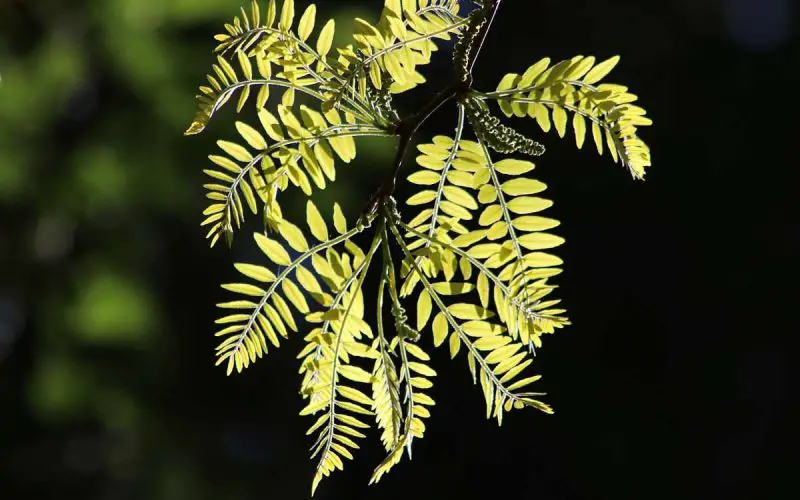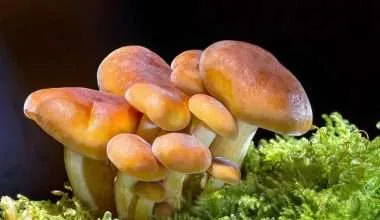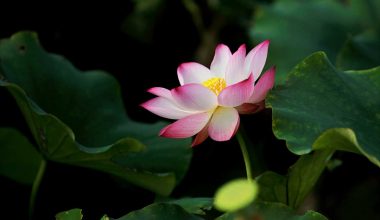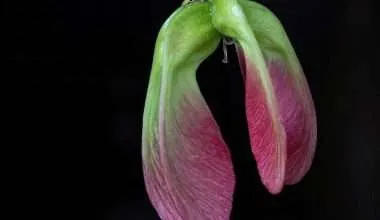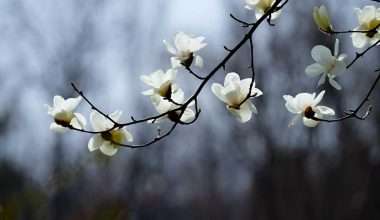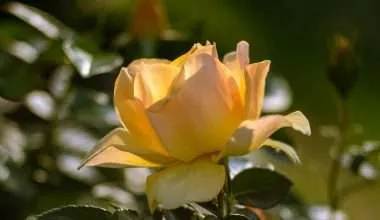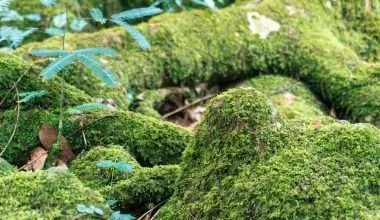Table of Contents Show
Belonging to the pea family, Fabaceae, locusts can grow as mature trees or shrubs.
Locusts are commonly found as native vegetation in the widely-dispersed areas of Northern America.
They have historically been grown in this region for several purposes. Some of these include keeping soil erosion in check and hedging (planting bushes for edges).
You’ll find this fast-growing flowering tree planted across the world. It then spread so excessively that people believed it’s their region’s native tree.
In England, it was actually introduced to provide wood and protect from soil erosion. In Australia, the tree was introduced (as a seedling) as a fodder tree.
Moreover, many different species of locust trees are usually cultivated for decorative purposes because locust trees have a number of beneficial characteristics, being beautiful as well as practical.
On the other hand, locust species spread out so much on the land that they are considered invasive species!
We will be exploring three types of locust trees (with their sub-species) in great detail; the black locust, honey locust, and water locust.
Get ready to acquaint yourself with the three most popular types of locust trees and how to care for them!
Black Locust – Robinia pseudoacacia
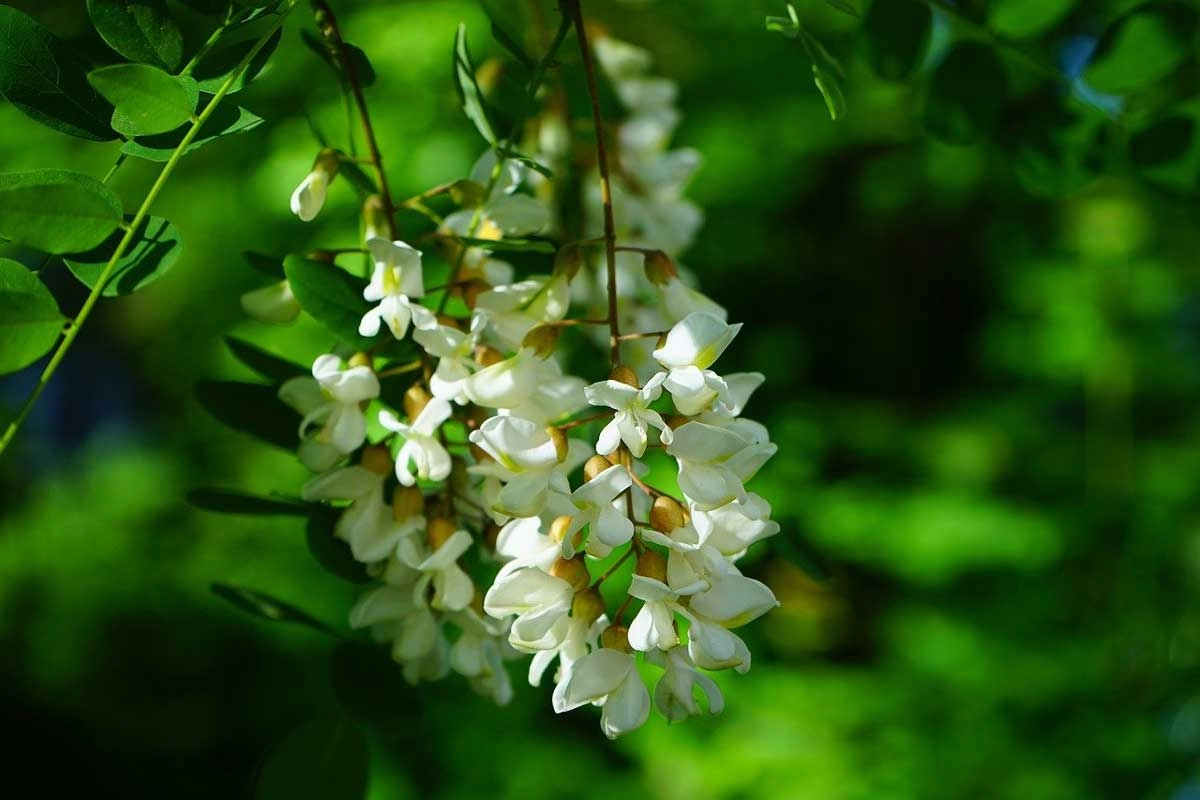
Without a shadow of a doubt, the black locust tree is one of the most renowned types of locust trees, owing to its ease of cultivation and numerous uses.
The black locust is a short-sighted deciduous tree with irregular branches and soft leaves. It has a short life span and its fern-like exterior creates a dappled shade under the canopies.
It originates from the Appalachian Mountains located in central Pennsylvania, Georgia, and Alabama.
A lot of locust trees are planted for decoration purposes, especially the black locust tree, which is also known as the yellow locust or false acacia.
The timber of the locust tree is used for natural resources for other products. It also makes great fence posts. The black locust’s enemy is the locust borer, a native insect that is found in Canada and the U.S.
The advantages of a black locust tree are many, as it thrives in a wide range of environments and can grow swiftly.
This deciduous tree grows naturally in woodlands and along river banks and can withstand drought and poor soil conditions.
Black locust trees, endemic to North America, can sometimes grow to be as tall as 80 feet or more; however, their average height usually ranges between 40 and 60 feet, with a broad canopy that spans 30 feet.
These trees also provide shade for the plants below them as their branches grow in such a way that there are gaps between them.
In order to grow, these trees require vast land and exposure to the sun at all times. Although these trees can grow quickly, they can also become invasive in some areas.
Black locust trees can eventually take over your yard, so it is important to handle this potential problem proactively.
Another helpful tip for the optimum growth of black locust trees is good drainage, as a black locust tree does not agree well with soggy soils.
Despite this, black locust trees can adapt to growing in damp soils as long as it is not waterlogged.
Unlike other species of locusts, the black locust tree can survive in a variety of different situations that are less optimum for growth.
These include low-quality soil, air pollution, high level of salts, and drought.
In fact, the black locust is capable of improving the quality of the soil it grows in. The tree does this by absorbing nitrogen from the atmosphere and releasing it into the soil.
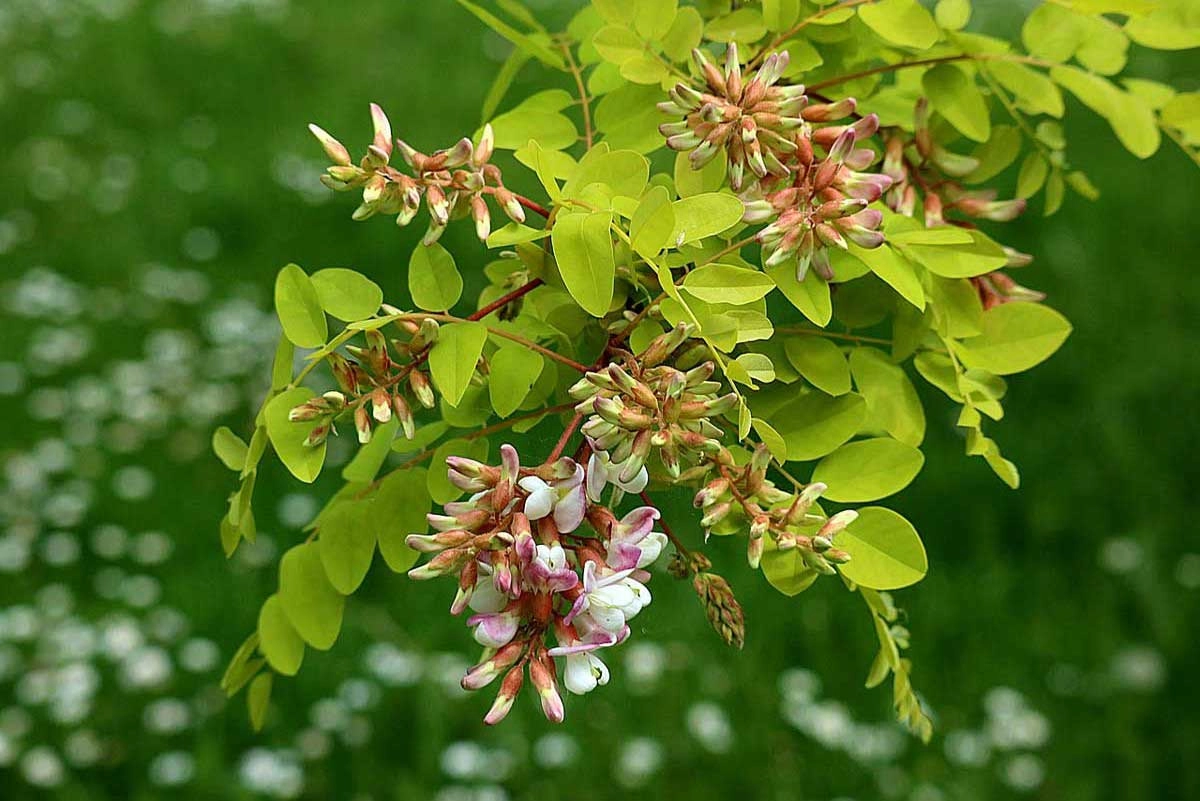
The black locust tree has a lot of blossoms, which is one of the reasons why it is very popular as an ornamental tree. The flowers, appearing in bunches, drape from the tree and range in length from 4 to 10 inches.
The white flower of a locust is usually white and exceedingly fragrant. Some people are also able to grow pink and purple flowers. How lucky!
The leaves of a black locust tree have a unique shape and colour. They are primarily oval and have a blue-green colour.
At the foundation of its leaves, the black locust tree has stubby and sharp horns. Historically, these thorns have been employed as building nails as they are incredibly sharp.
Parts of the black locust including the bark, seed pods, branches and leaves are all quite toxic eating, unlike the honey locust as you’ll see.
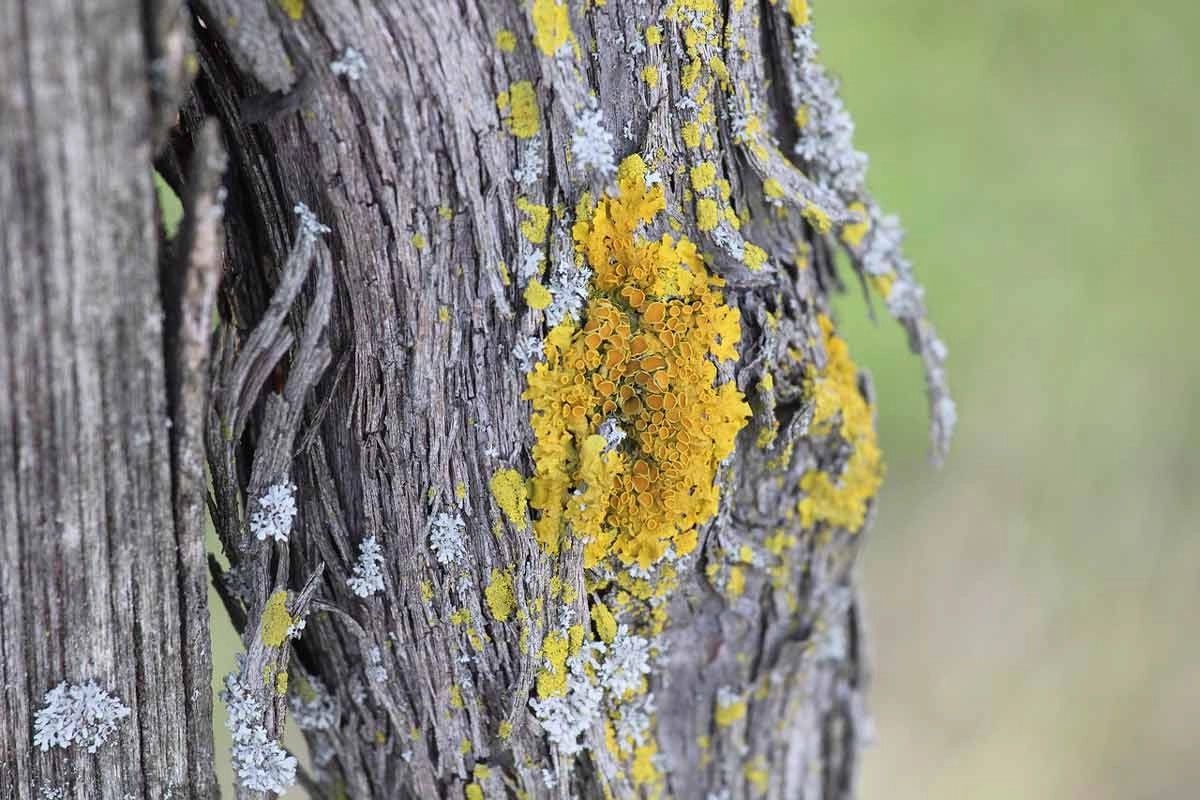
The Uses of a Black Locust Tree
Honey
The black locust tree has enormous clusters of flowers, which attract bees and offer an ample supply of nectar.
As a result, black locust trees are often planted in areas where there are a lot of honeybees that can aid in the production of honey.
Timber
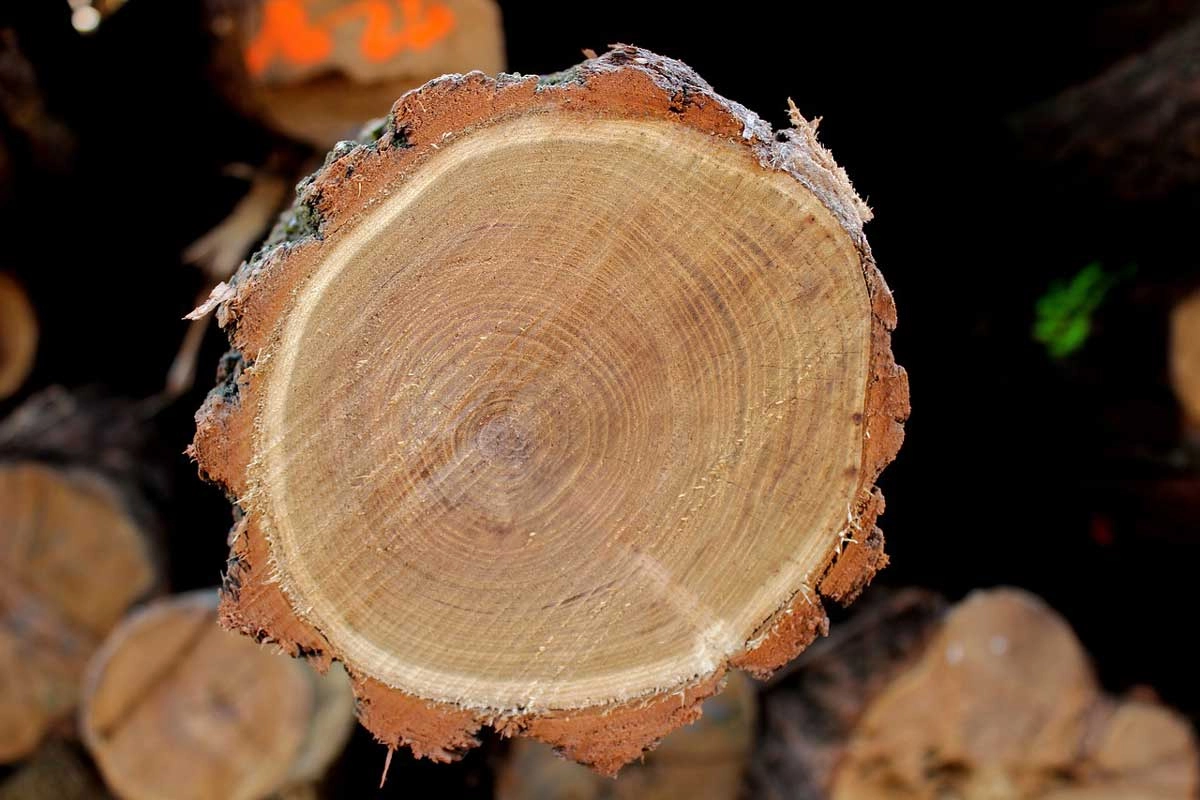
Black locust trees are an excellent source of high-quality and sturdy timber. This tree’s wood is often utilised in the construction of fences.
The tree’s rapid growth is particularly advantageous because it allows for the production of high-quality wood in a relatively short period of time.
This is one of the primary reasons why black locust trees are abundantly grown.
Firewood
Cutting the wood of a black locust tree is difficult because of its sturdy nature. It is, nevertheless, an excellent supplier of firewood as it is high in density, which means that it takes longer to burn.
As a result, black locust wood is far more efficient as firewood than other available options.
Black Locust Tree Cultivars – Subtypes
Frisia Black Locust – Robinia pseudoacacia ‘Frisia’
This species of black locust trees is often grown for its beauty and decorative quality.
The frisia black locust bears bright yellow leaves that can also occasionally turn a shade of lime green. This gives any landscape striking and distinctive foliage colours.
The frisia black locust tree can grow to be as tall as 40 feet and has a 25 feet diameter, making it comparatively smaller than the black locust tree.
Purple Robe Black Locust – Robinia pseudoacacia ‘Purple Robe’
The Purple Robe Locust (robinia pseudoacacia) is a beautiful ornamental tree, famous for blooming stunning pink and purple shades flowers in the spring. It is a common street tree and provides great shade.
This beautiful black locust tree is also incredibly attractive, with eye-catching aesthetics. The tree’s blossoms, clash perfectly with the leaves.
While the tree is growing, its leaves have a purple tint to them, and as the foliage matures, it assumes a deep bronze color.
New Mexico locust
New Mexico locust (Robinia neomexicana) is a smaller tree in the Fabaceae family that thrives in mountainous regions across the southwestern United States.
It can be seen in pure stands located in forests and woods. It can grow and rejuvenate an environment after a fire due to its strong root sprouting.
Carob locust tree
Carob locus tree or Ceratonia siliqua is an evergreen dioecious tree with a wide crown. They belong to the Fabaceae family. It reaches up to a height of 10 meters.
With a thick trunk, it can become a greatly thick tree. The bark of the branches is brownish-gray in color and the stems are brown and red.
Twisty Baby Black Locust – Robinia pseudoacacia ‘Lace Lady’
Available as a tree or shrub, this black locust will grow to a modest height of 20 feet and a similar spread.
If it is grown in a container, the twisty baby black locust can assume a height of approximately 5 feet.
The twisty baby black locust gets its name from the unique way its limbs twist and bend. You can prune it during the winter to create additional twisting.
Honey Locust “the Locust Tree with thorns” (gleditsia triacanthos)
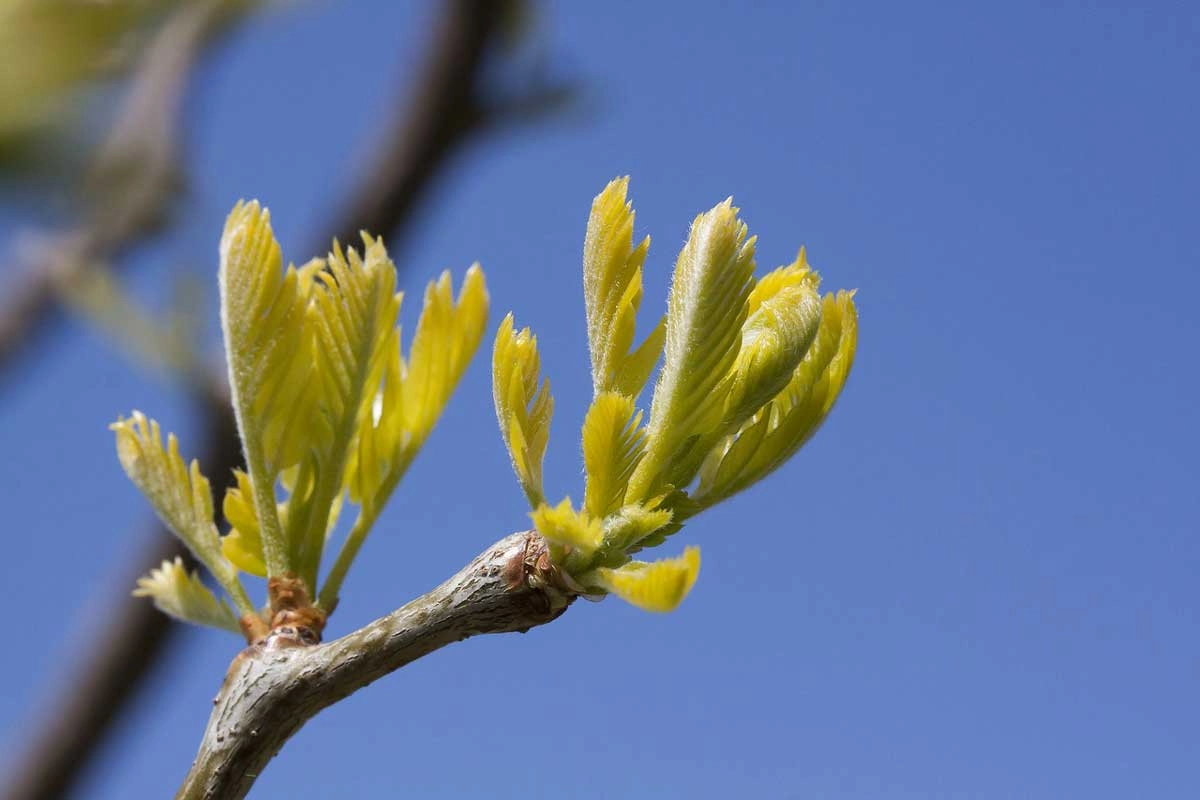
The honey locust tree is renowned in landscaping because of its huge size, which can be attained in a short period of time due to the tree’s rapid growth.
This tree, which may reach heights of 100 feet in the wild, will generally grow to between 40 and 70 feet when farmed.
It has a broad spread and offers valuable shade on park areas. Its wonderful span of branches and foliage allows it to be an excellent shade tree. It also has tiny leaves that do not need to be collected when they fall.
The compound leaf of honey locust is just like a feather.
They are too little to be picked up and too small to produce clogs or issues in drains and sewage systems.
This is especially beneficial for towns since it entails less clean-up and lowers costs to maintain an area.
These characteristics have contributed to the honey locust tree’s widespread cultivation for use in urban landscaping.
They are native to the eastern part of the United States. In contrast to the black locust tree, they require rich, wet soil to thrive.
Even under less than perfect conditions, they will thrive, but pests and diseases will be more prevalent due to high soil pH, high salt levels, and a lack of moisture.
In general, honey locust trees tolerate disturbances, so planting them is simple.
Just make sure you have enough room in a sunny location and that you dig an enormous hole for the roots because they are larger than you would anticipate.
The leaves of the honey locust tree are brilliant green in the spring and become golden in the early fall.
The fast-growing plant will produce new leaves in the spring, usually a few weeks before the black locust tree.
Both the leaf bases as well as the long branches of this tree are covered with thorns. As the thorns mature, they become dark brown and become stiff and brittle.
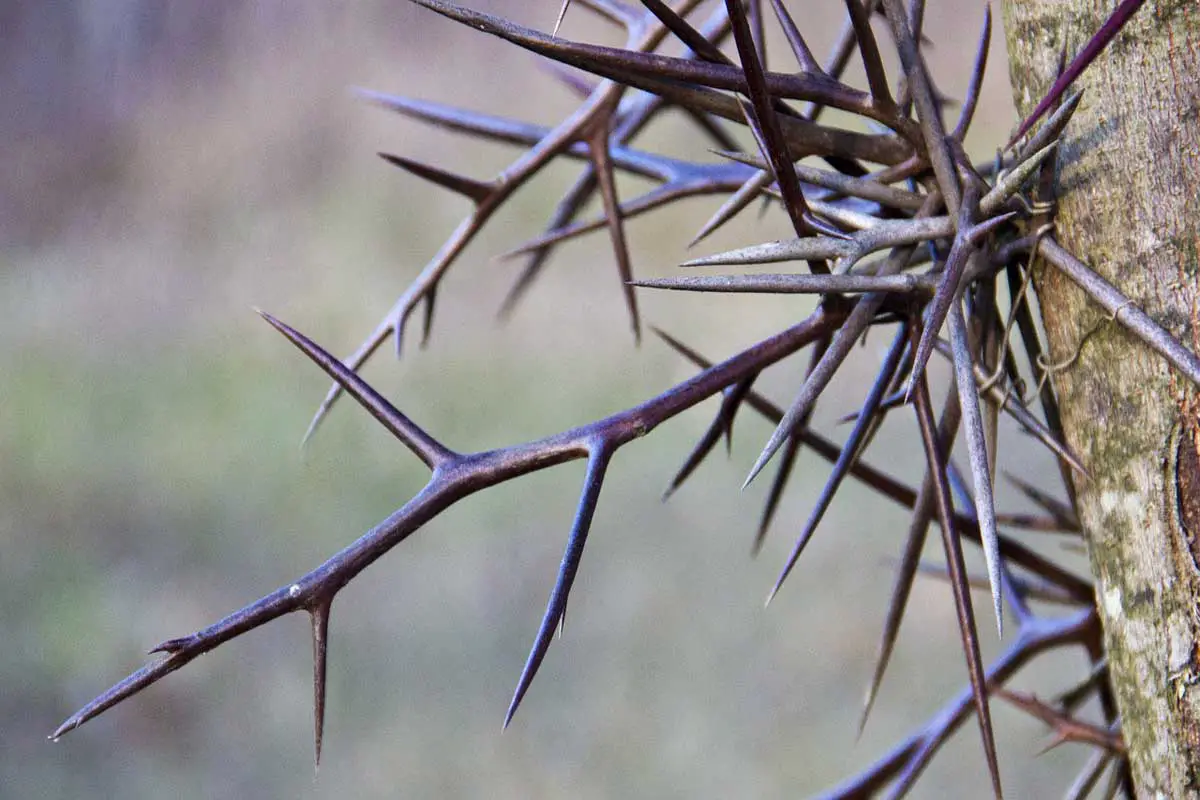
The thorns tend to be very sharp and can reach a length of 4 inches. However, there are types without thorns available for purchase as well.
There is a sub-type known as thornless honey locust which have “inermis” in their scientific name (Latin for Harmless) as they don’t have thorns.
This is why thornless honey locust tree is more popular amongst gardeners!
FYI: The scientific name of thornless honey locust is gleditsia triacanthos inermis.
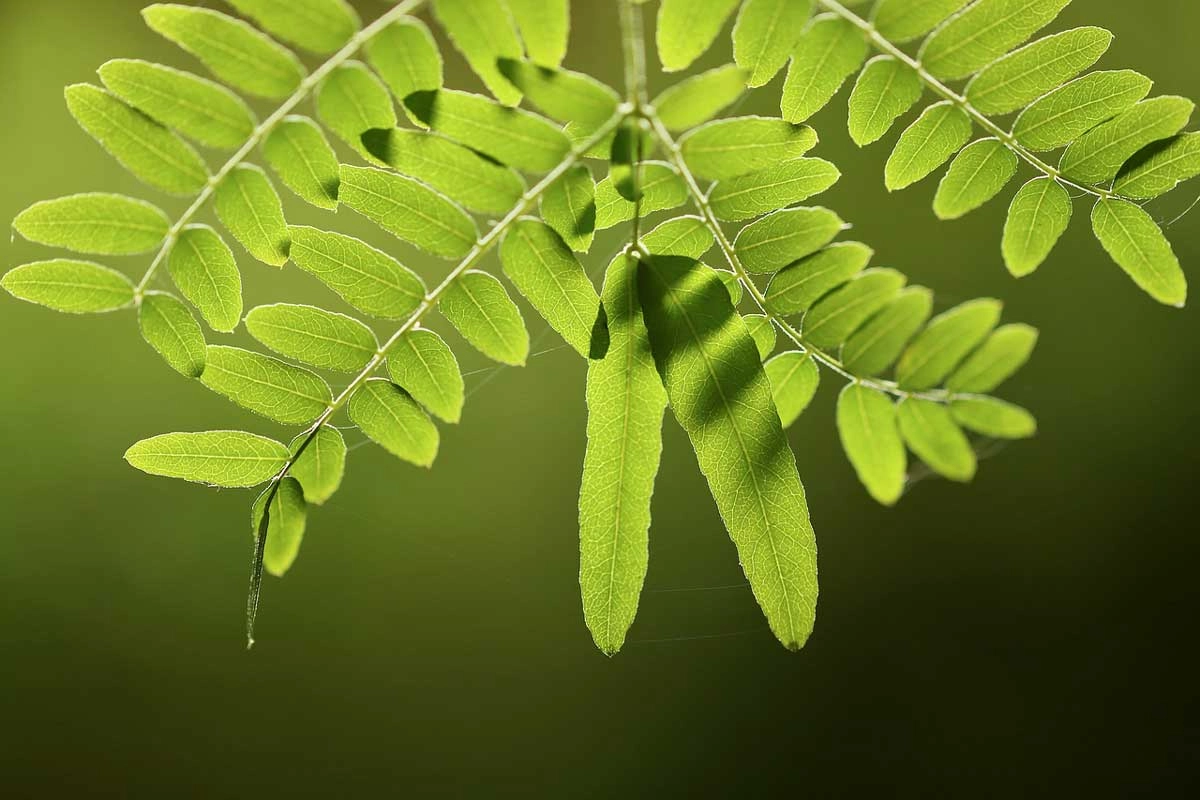
Petite and pale green, the blooms of the honey locust tree are tiny and delicate. They are actually delicate enough to be called bristly locust.
Flower clusters occur on male trees, while female blooms are distributed randomly, which have a powerful smell. These flowers often sprout in late spring or early summer seasons.
Before I forget to mention, honey locust tree also has these seed pods or legumes. The seed pod contains peas which animals love to eat! These are often called ‘carob pods’.
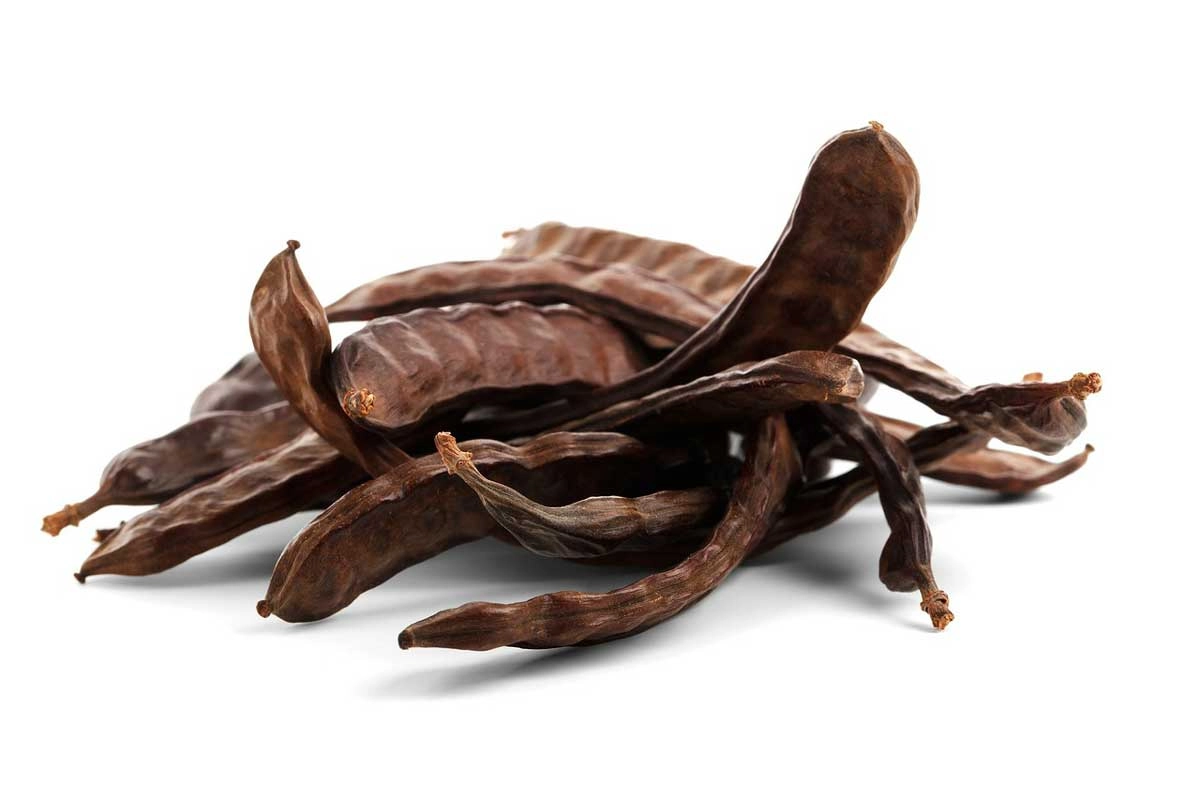
Recall that the black locust seed pod, bark and leaves were all poisonous.
Uses of the Honey Locust Tree
Landscaping
City landscapers employ honey locust trees the most primarily because of their numerous benefits. Pests and diseases that harm the tree have increased due to over-cultivation.
In certain regions, the tree has become so invasive that it has been labelled as a “weed”. Crops and grasses have little chance against it because of its rapid growth.
Through the construction of barriers along rivers, it also inhibits animals from accessing natural waters.
Food
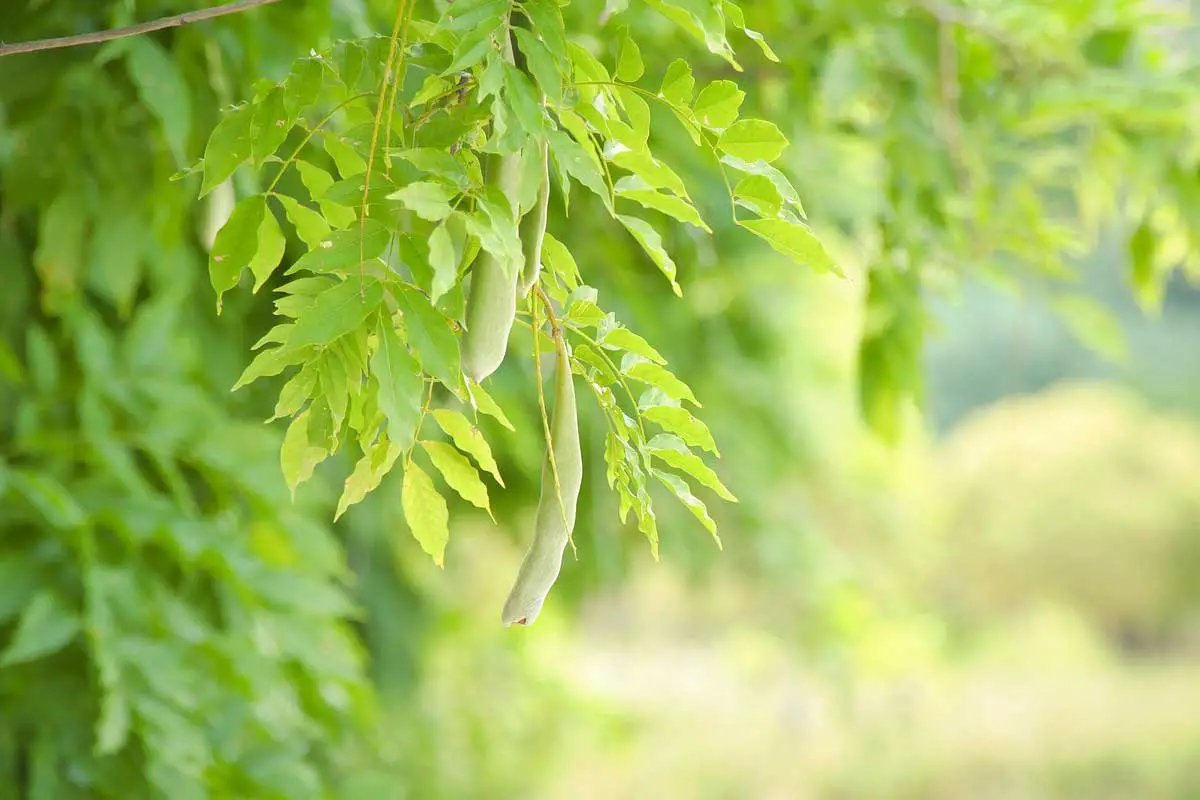
The seed pods of this tree have a pleasant pulp that is edible, as opposed to the poisonous pods of the black locust tree, which should never be ingested.
Native American tribes utilized the pulp as conventional medicine and food, which is still used to create tea and beer. Animals and cattle also eat the seed pods.
Timber
Like black locust trees, honey locust trees produce robust, resilient, and excellent quality wood. Although the tree is not commonly farmed for its wood, it is famous in niche markets for use in furniture.
Honey? Not at all!
Despite its name, the honey locust tree is not utilized to promote honey production. The sweet-tasting pulp contained in the tree’s seed pods is considered being the inspiration for the name.
Honey Locust Tree Cultivars – Subtypes
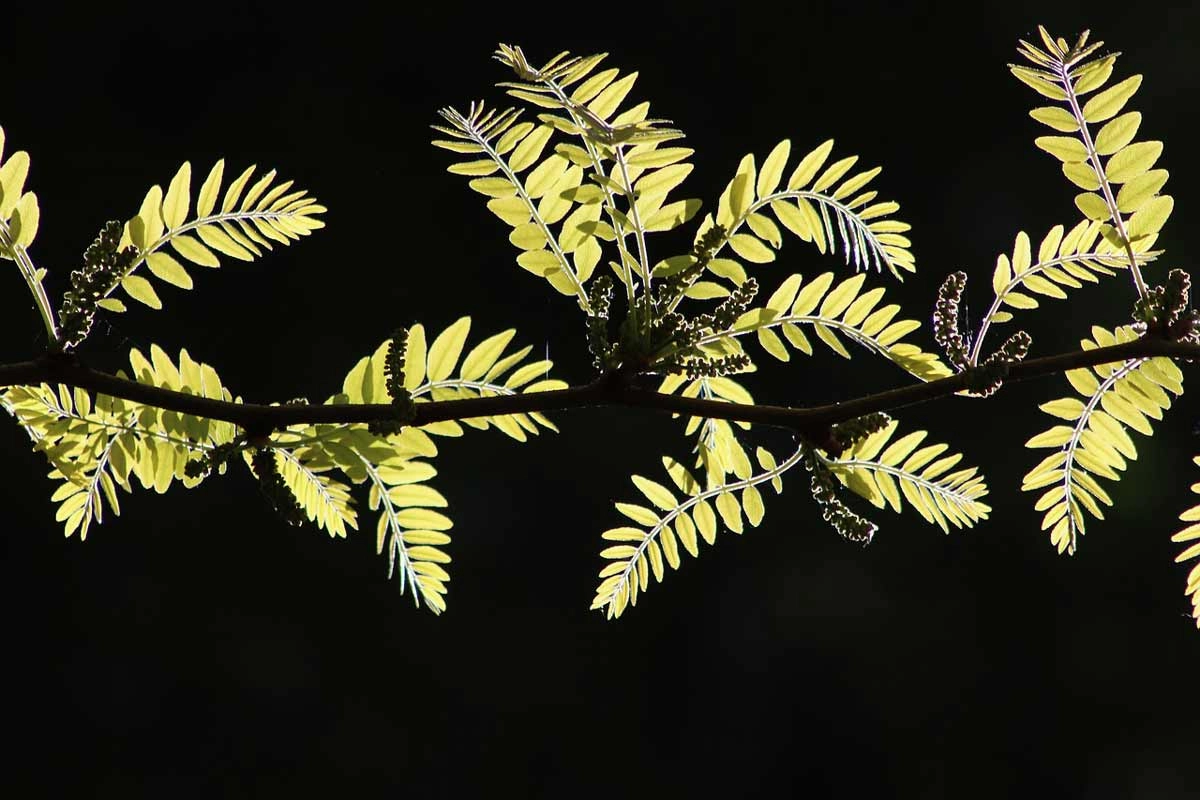
Shademaster Honey Locust
This honey locust tree grows faster than most other locust trees, making it an outstanding grower. It has no thorns and a relatively straight trunk.
It could grow to reach between 50 and 70 feet tall, with a comparable spread.
This tree’s leaves are green and turn copper and golden in the fall. The shademaster also does not bear fruit, making it exceptionally low-maintenance. The blooms of this tree have a pleasant scent and are fragile.
Imperial Honey Locust
This honey locust type has delicate feathery leaves that resemble a fern, beginning greenish in the spring and early summer and turning yellow in the fall before falling in the winter.
It has yellow-green blooms and may reach heights of 35 feet. It is hot and drought-tolerant and prefers the whole light of the sun.
Skyline Honey Locust
This tree has exquisite fern-like leaves and a pyramid form, giving it a highly polished appearance.
This cultivar has no thorns, and it does not produce fruit. This makes it a lot easier tree to maintain, as cleaning out the fruit from honey locust trees can be a dirty task.
Like so many other locust trees, the skyline honey locust is tolerant to both damp and dry soil, and this species mainly will thrive in any soil pH.
It generally develops to be around 45 feet tall and 35 feet wide.
Comparison of Black Locust vs. Honey Locust Trees
Honey locust trees and black locust trees have similar names and share certain features, but as different species, both types have many qualities that they do not share.
Similarities
- Parts of the United States of America are home to black locusts and honey locust trees. Only Oregon and Washington have black locust trees and no sign of honey locust trees.
- They are both members of the pea family, Fabaceae.
- Both the black locust and honey locust trees will bloom from the middle of April until the end of spring.
- In the vicinity of a black walnut tree, either the black locust or the honey locust can be produced. Due to its thorns, both types are also deer-tolerant.
- Differences
- At maturity, honey locust trees can grow to be bigger than black locust trees. While natural black locust trees may grow to be up to 80 feet tall, most examples are only 50 feet tall, and honey locust trees can grow to 100 feet tall.
- Compared to honey locust trees, black locust trees are more tolerant to diverse types of soils. A black locust is indeed happy to grow in arid conditions or clay soil as long as it drains well; but, a honey locust needs wet and rich soil to thrive. As a result of adjusting to these conditions, the honey locust tree will be more susceptible to pests and illnesses compared to a soil with adequate moisture or salt content or a soil formed of clay.
- In the Midwest, black locust tree is known to be invasive due to their rapid root suckers and self-seeding. It is not recommended to plant black locust trees in many locations due to their inclination to spread. Honey locust trees are not invasive.
Water Locusts
A native of the Southeastern United States and neighboring regions, Gleditsia aquatica is also known as water locust, or swamp locust, is a tree that typically reaches a height of 50 to 60 feet.
Situated in wetlands, it loves partial sunlight like the other plants in its family (Fabaceae) (pod). These pods, on the other hand, generally only contain one seed.
In most cases, the leaves are simple-compound, although sometimes Acacia is present.
